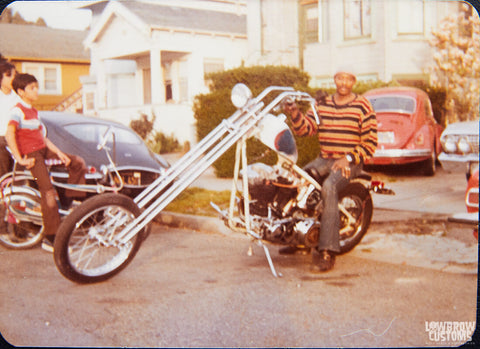TABLE OF CONTENTS
- What makes a Frisco style bike? 60s Style Skinny Chopper Features
- Gas Tank Position & Fuel Efficiency
- Mid Controls & Ground Clearance
- Fork Length & Skinny Frames
I love choppers. Like, I really love them. There’s just something about that raw, stripped-down appeal—especially when it comes to a true 60s skinny chopper—that catches your eye and won’t let go. And with a bit of a trained eye, you can almost pinpoint which region of the country a certain bike came from, just by looking at its details. Growing up as a skateboarder, I noticed the same thing—East Coast skating was distinctly different from West Coast skating, and the chopper world is no different.
Of all the regional variations out there, one stands out as possibly the most iconic: the Frisco style chopper (Yes, that’s short for San Francisco, California.). It’s got a certain swagger—lean, nimble, and undeniably cool. People have strong opinions on what truly defines a chopper style motorcycle, and they’ll debate it all day long. But hey, I’m just sharing my take on the Frisco scene here, and I hope it resonates with fellow chopper lovers.
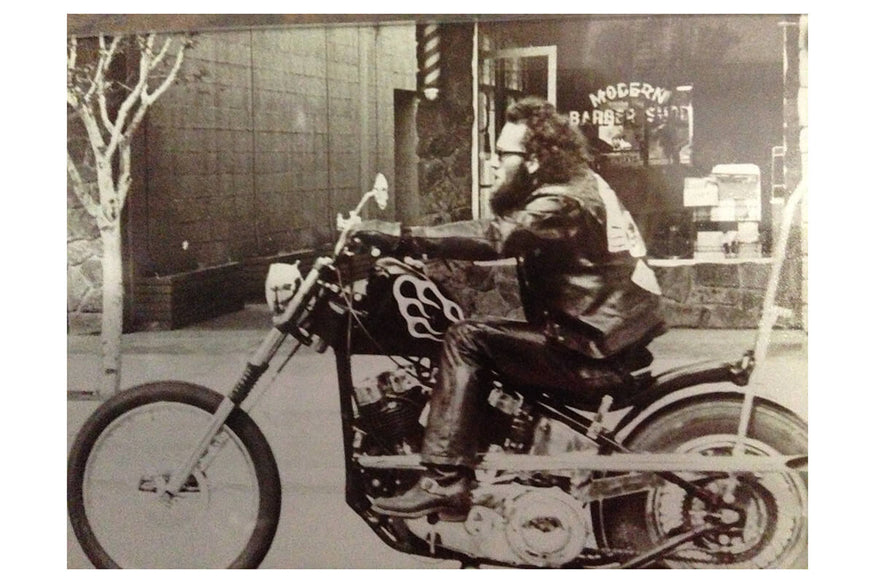
Frisco style chopper in 60s
What is a Frisco Style Chopper?
A Frisco style chopper is a type of custom motorcycle which lends itself nicely to stripped down style. Frisco bikes were characterized by having long, low frames and highly raked front ends. Generally, they feature a high-mounted gas tank, high mid foot controls, lots of ground clearance, and a lean, thin silhouette. Go fast and look good doing it. Frisco bikes were purpose built. Of course, they were trashy and cool looking, but they also functioned well.
The name “Frisco” is short for San Francisco—a nod to the Bay Area scene where this style really took shape in the 60s chopper era. Some folks also call it a skinny chopper because the frame stays compact, and any non-essential parts get “chopped” off for a cleaner, minimalist look. Riders would often modify (or “frisco”) a Sportster tank by lowering the tunnel and moving the bung to the rear. That way, every precious drop of fuel was accessible, even while tackling San Francisco’s steep hills.
While you might think of a 70s style chopper as having radically raked front ends and slammed frames, a Frisco style bike tends to keep its geometry closer to stock. The stance is still low, but with just enough rake to look aggressive—and still be practical. Combined with sportster frisco mid controls (where the foot pegs ride higher for added lean angle), you end up with a custom motorcycle that doesn’t just show off your rebel streak, but can also handle everyday roads.
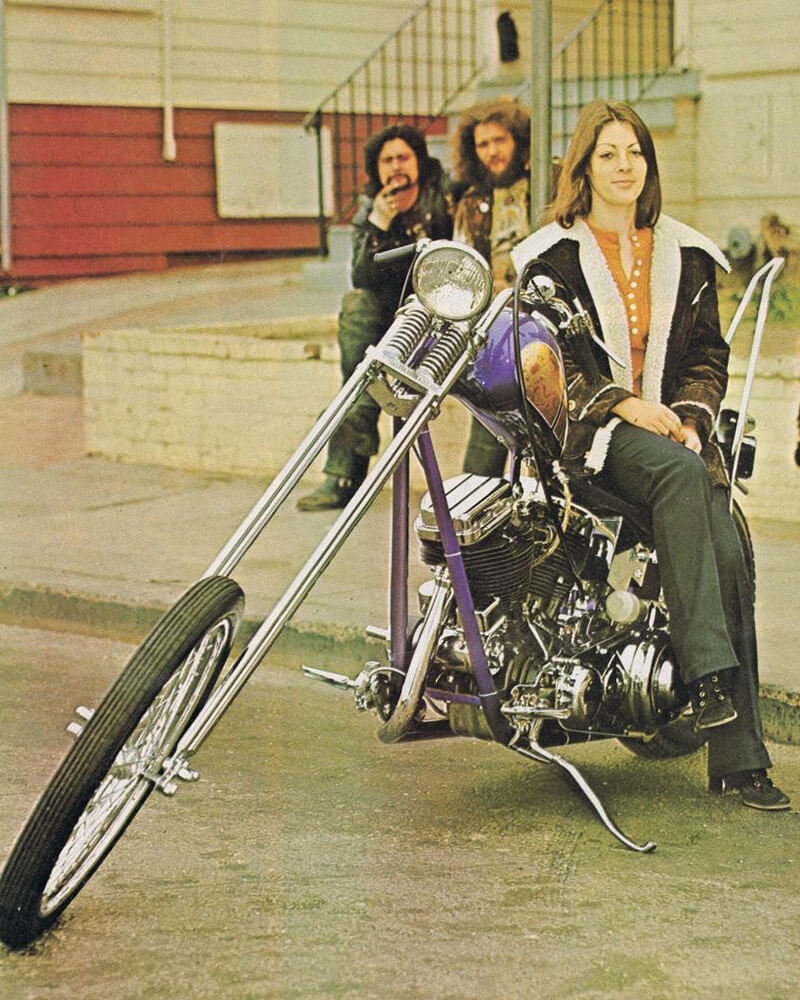
This custom chopper has custom Frisco chopper flair despite having a low frame and raked out front end
What makes a Frisco style bike? 60s Style Skinny Chopper Features
There’s a certain formula that sets Frisco style bikes apart from other types of chopper motorcycles: minimalism, purposeful geometry, and that unmistakable West Coast flair.
Gas Tank Position & Fuel Efficiency
A Frisco style chopper almost always features a high-mounted gas tank—often with a low or no tunnel—so it sits right on top of the backbone. Some builders would even take a King Sportster tank, slice out a band in the middle, and weld it back together, relocating the bung to the very bottom for maximum fuel capacity. That’s where the term frisco style sportster tank came from. Not only does this setup help you squeeze out every last drop of gas (crucial on those steep San Francisco hills), but it also contributes to the classic skinny chopper look that Frisco bikes are famous for.
Mid Controls & Ground Clearance
High foot pegs—or “super high mids”—are another signature of Frisco choppers. In many cases, riders ditch the pegs altogether and rest their heels on the engine cases, which some might call “bad boy status.” The real reason? Ground clearance. On a sharp turn, foot pegs are often the first things to scrape, so mounting them higher opens up your lean angle. That extra agility is part of what makes a Frisco style chopper so fun to ride—and so distinctly different from more laid-back chopper styles.
Fork Length & Skinny Frames
Speaking of ground clearance, Frisco bikes typically run longer-than-stock front forks but keep the neck pretty much at stock rake—essentially the opposite of a more extreme 70s style chopper or deraked chopper. This taller stance lifts the frame higher off the pavement, which not only gives the bike its unmistakable posture but also makes it surprisingly nimble for a 60s chopper. Pair that with a narrow frame design, and you’ve got a tight, purpose-built machine that’s unlike anything you’ve ever ridden. It’s the perfect marriage of stripped-down aesthetics and real-world rideability, reinforcing why Frisco choppers stand apart in the realm of custom motorcycles.
Say what you will, or listen to what your buddy that’s an “expert” and only rides GSXRs says, but a bike that has that setup is unlike anything you’ve ever ridden.
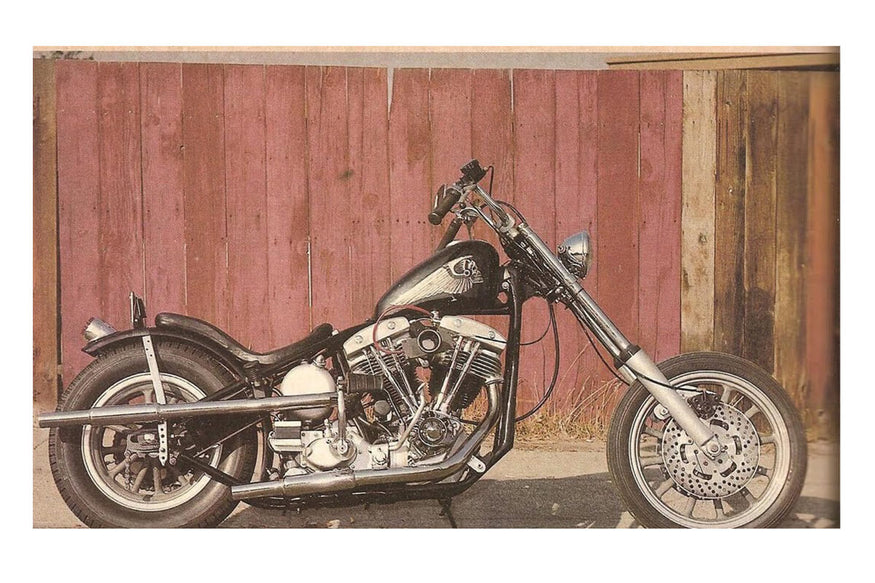
The 60s Frisco Style Skinny Chopper Features
How is the Frisco Style Gas Tank Designed?
The fuel valve was moved as far back as it could, and the filler neck was moved as high up as it could. This allowed you to use the full capacity of the gas tank, filling it right to the brim and using every drop with the petcock at the very rear. Harley-Davidson Sportster gas tanks were a common choice, often tailored for Frisco-style choppers with high-mounted designs that maximize functionality. Modern examples include the Frisco Mount Sportster Gas Tank, available in both standard width (2.5 gallons) and a narrower version (2.1 gallons), catering to different stylistic and practical preferences. This era and style is where the now-common term Frisco Sportster Gas Tank came from.
The purpose being to get as much fuel as you can, while maintaining the skinny factor of the bike. As you can imagine, a flat-bottomed tank with those modifications sitting on top of a Harley Frisco style backbone could add up to an extra half gallon of gas, or more. Go farther and no more worrying about your bike not starting due to the location of a factory petcock and the angle of the San Franciscan hill you parked it on!
I’ve also heard that a reason for this was so your carb didn’t starve on one of the gnarly downhills when gravity made all of your gas move to the front of your tank. It makes sense to me. Keeping your bike narrow lets you slip between cars and generally ride wherever you want.
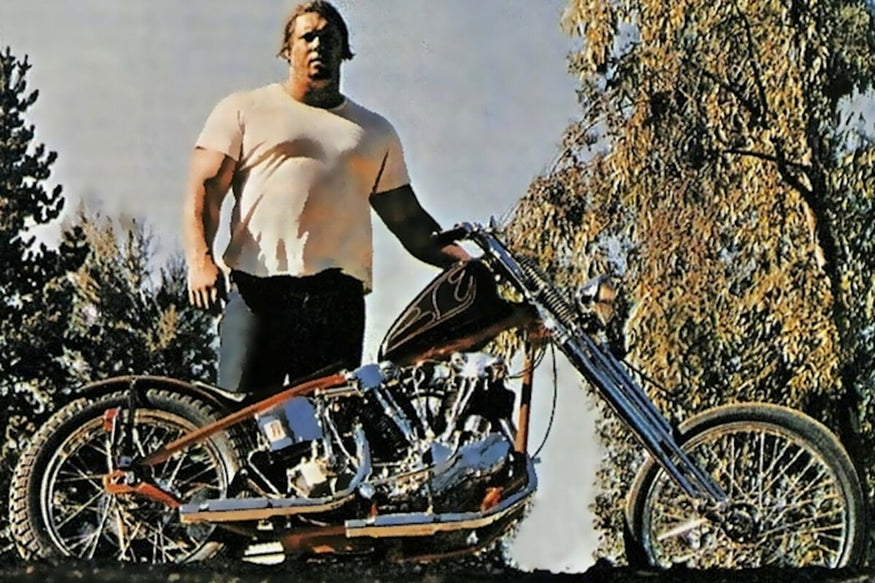
The Frisco fuel tank is designed to take advantage of every drop of gas
Frisco Style vs. Other Chopper Styles
I have personally built choppers that are a minimum 6” over with no rake, and I can tell you that zig zagging through cars and avoiding potholes becomes significantly easier.
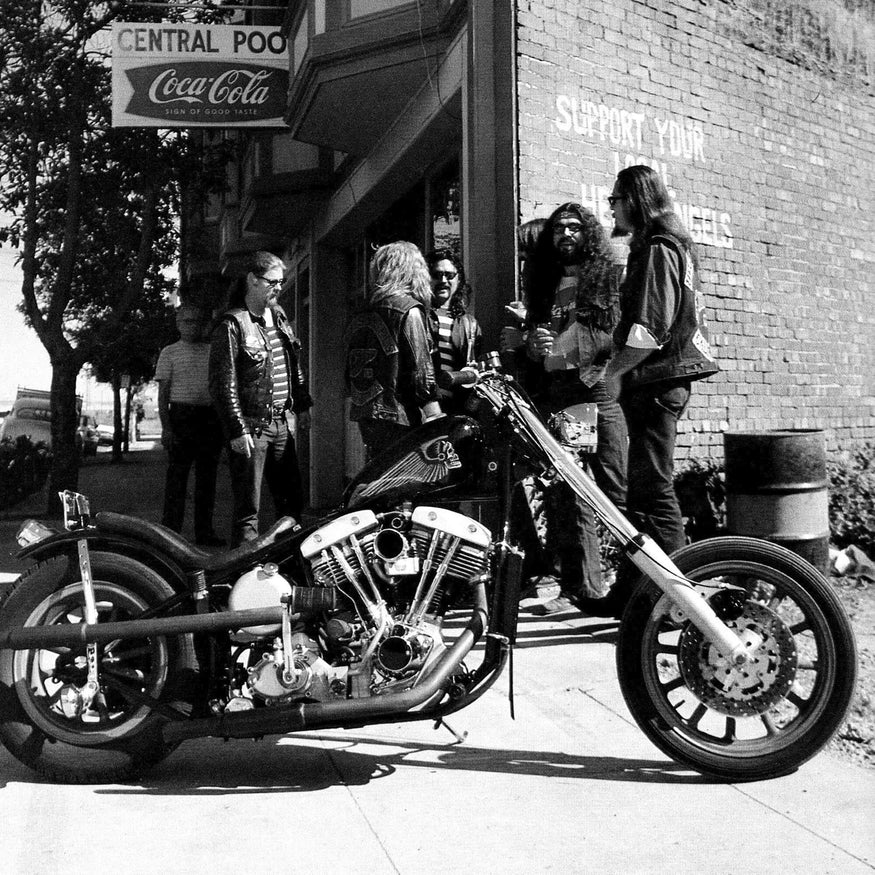
Custom Frisco chopper on the street
Frisco choppers occupy a sweet spot between stripped-down minimalism and real-world function—specifically shaped by the rolling hills and crowded city blocks of San Francisco. While bikes on the East Coast might rely on lower stances and wider tires, and some 70s style chopper builds go wild with rake angles and extended front ends, a true Frisco style generally keeps the rake close to stock or only slightly tweaked. The forks often stretch around six inches over stock—enough for added ground clearance without tipping over into extreme geometry.
This modest approach sets Frisco choppers apart from certain SoCal bikes or classic bobbers that focus on slamming the frame. You’ll still see high-mounted gas tanks and mid controls, but the emphasis remains on agility over showy proportions. Some folks assume that slapping on a raised tank or lengthening your forks alone makes a “Frisco build,” but it’s more nuanced than that. To really embody what a Frisco style chopper is all about, the design has to integrate functional elements—like practical fork length and high pegs—to handle tight city turns while still flaunting that slim, no-nonsense silhouette.
Historical & Cultural Background
Frisco choppers trace their lineage to the post–World War II era, when returning veterans cut weight off their Harleys and Indians to boost performance. By the 1960s, these modifications had evolved into the 60s chopper movement, especially in Northern California. Local clubs, including the Hells Angels, helped popularize choppers with a uniquely urban edge—raising the tank, keeping the rake near stock, and stretching the forks just enough to clear those infamous San Francisco hills.
The result was more than just a look; it was a functional necessity. Navigating tight city streets and steep gradients pushed builders to design bikes that could lean a bit farther, run a bit higher, and stay narrow enough for quick lane splits. That’s where frisco's Sportster tanks came into play—flat or low tunnels to maximize fuel capacity and keep the bike’s profile slim. High mid controls also preserved ground clearance, making these rigs surprisingly agile for their time. It’s the marriage of form and function that turned the Frisco style into a cultural statement, a nod to the fact that a truly great chopper isn’t just for show—it's built to ride.
Performance and Practicality of Frisco Choppers
Frisco bikes may embody a classic 60s chopper aesthetic, but they’re surprisingly agile—particularly in urban settings. By keeping the rake near stock (or only slightly modifying it) and stretching the forks around six inches over, these builds preserve a relatively tight turning radius. That means you can angle through cramped city streets or hug winding roads without constantly worrying about foot pegs scraping on every corner. It’s a welcome contrast to some 70s choppers, which might look flashy but can feel unwieldy with extreme rakes and elongated front forks.
Of course, there’s a trade-off. A stripped-down skinny chopper—with tall pegs, minimal padding, and a high-mounted tank—can test your endurance on longer hauls. Comfort’s not always the first priority in a Frisco-style setup. But for riders who want a purposeful custom that balances stripped-down style with actual rideability, that’s the beauty of these bikes. They capture the renegade spirit of classic choppers while still offering enough functionality to tackle daily commutes or those legendary San Francisco hills without sacrificing too much in the way of handling or ground clearance.
Frequently Asked Questions about Frisco Choppers
What makes a bike a chopper?
The term “chopper” comes from literally “chopping” parts off a stock motorcycle—cutting frames, stretching forks, and adding bold handlebar setups to create a one-of-a-kind, personalized ride. These modifications first gained popularity in the post–World War II era, when returning veterans stripped down their bikes (often Harleys and Indians) for speed and individuality. While bobbers focused on removing excess weight to boost performance, choppers evolved further by altering frame geometry and aesthetics to make a statement. By the 1960s, choppers had become symbols of counterculture rebellion, emphasizing personal expression and a break from factory-standard designs.
Are Frisco style choppers hard to ride?
I have personally built choppers that are a minimum 6” over with no rake, and I can tell you that zig zagging through cars and avoiding potholes becomes significantly easier.
Are Frisco style choppers suitable for beginners?
Frisco style choppers are lean, nimble, and often keep the rake near stock—so on paper, they might look more beginner-friendly than, say, a radical 70s long-fork build. Their narrower frames and higher mid controls can make city riding and cornering less intimidating. That said, Frisco bikes are still stripped-down machines: minimal seat padding, an upright riding posture, and limited storage or protective features. Plus, maintaining (or even building) a custom chopper requires at least some mechanical knowledge. Beginners who don’t mind wrenching and want a lightweight, agile chopper may find Frisco style appealing, but those looking for all-day comfort or plug-and-play convenience might want to consider something a bit more forgiving.
What’s the difference between 60s and 70s choppers?
-
1960s Choppers: Built with functionality in mind. Many riders were ex-military or gearheads aiming for better performance and a sleek look—often ditching heavy parts, using rigid frames, and sticking to modest fork stretches. The idea was to balance speed, style, and practicality.
-
1970s Choppers: While they still embraced the rebellious spirit, aesthetics took center stage. Builders went wild with long, raked-out front ends, elaborate paint jobs, and eye-catching details (like tall sissy bars and bold sculpted frames). These bikes became rolling art pieces, often sacrificing some everyday practicality in favor of dramatic, show-stopping visuals.
How does a Frisco tank differ from a standard Sportster tank?
A Frisco tank is essentially a modified Harley-Davidson Sportster tank that sits higher on the bike’s backbone. It typically has a shallower (or no) tunnel, relocates the filler cap up top, and moves the petcock toward the back. Despite remaining in the same general capacity range as a stock Sportster tank—often around 2.5 gallons—these tweaks serve a few key purposes:
- Better Ground Clearance: With the tank perched higher, it’s easier to lean into sharp turns without scraping.
- Maximized Fuel Use: Positioning the petcock at the rear lets you tap nearly all of the gas in the tank—handy on steep hills.
- Slimmer Profile: Because Frisco tanks ride high and have less tunnel, they help maintain the narrow silhouette that’s such a hallmark of the style.
Purpose-built, performance-minded, narrow and nimble. That’s the best way I can sum up the legendary 60s Frisco style chopper. If you want to see who did it the “textbook way,” look at the Hells Angels builds from the 1960s through the 1980s—guys like Jimmy Souza, Armond Bletcher, Sonny Barger, Cisco Valderrama, and Rooster led the charge in defining what made these choppers so distinctive. Politics aside, they showcased the rebellious spirit of a West Coast scene that prioritized agility, attitude, and a stripped-down vibe.
Even today, the Frisco style chopper stands as one of the most iconic chopper styles, bridging the gap between pure functionality and raw aesthetic. It captures the essence of that era—lean silhouettes, high tanks, and just enough attitude to turn heads on the street. Whether you’re inspired by those old-school pioneers or simply looking for a skinny chopper that can handle city traffic without sacrificing style, the Frisco approach remains a timeless nod to the freedom and individuality that define custom motorcycle culture.
Words by: Nick Resty, Haints CLCD
Frisco Style Chopper Photos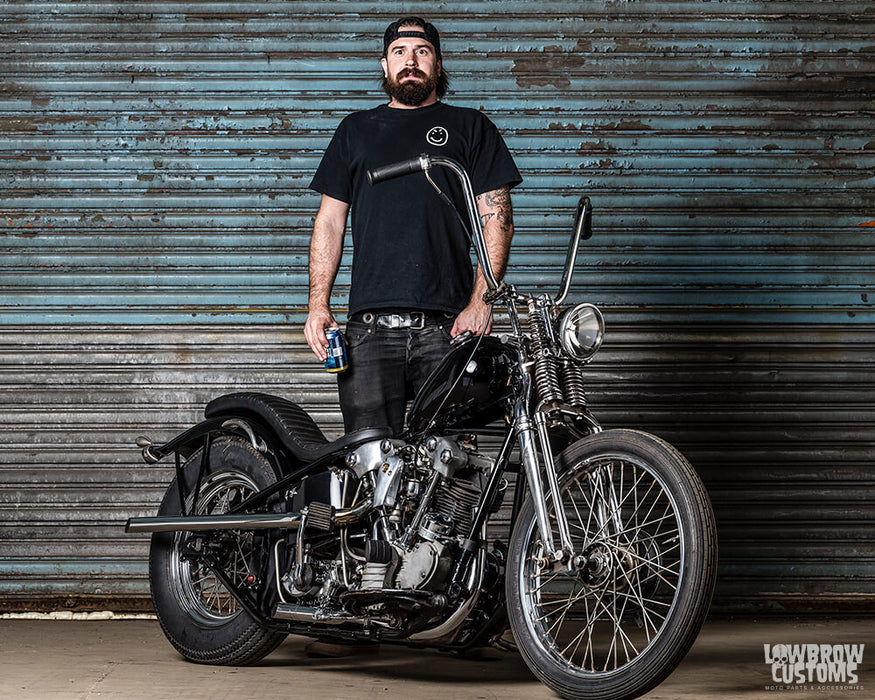
Frisco style chopper by Nick Resty • Photo by: David Carlo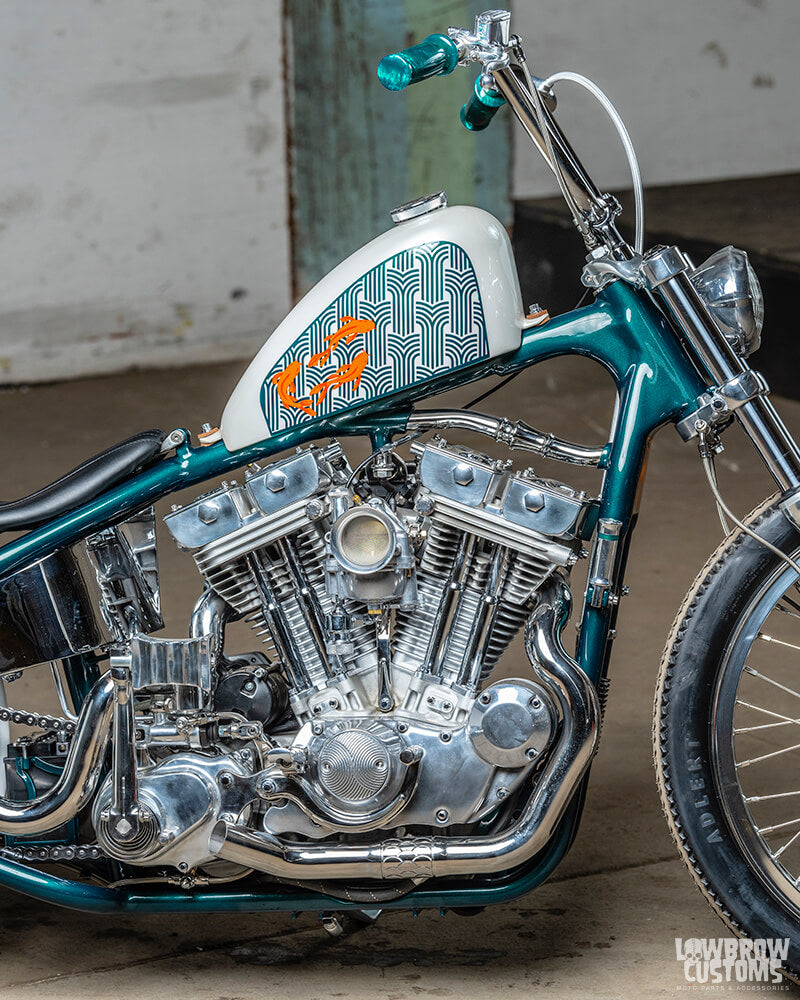 Frisco style chopper - Photo by David Carlo
Frisco style chopper - Photo by David Carlo
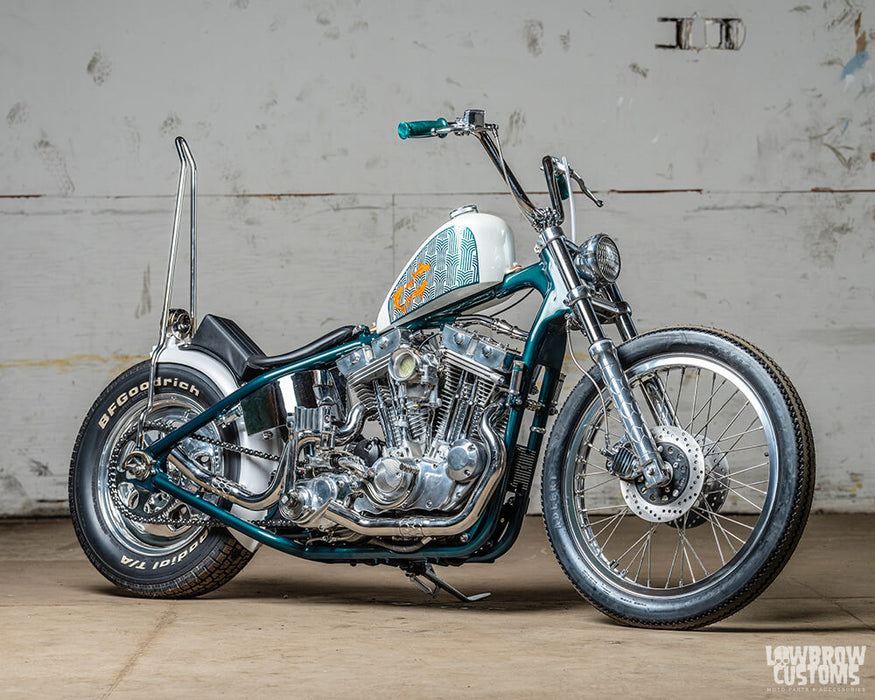 Harley Frisco Style - Photo by David Carlo
Harley Frisco Style - Photo by David Carlo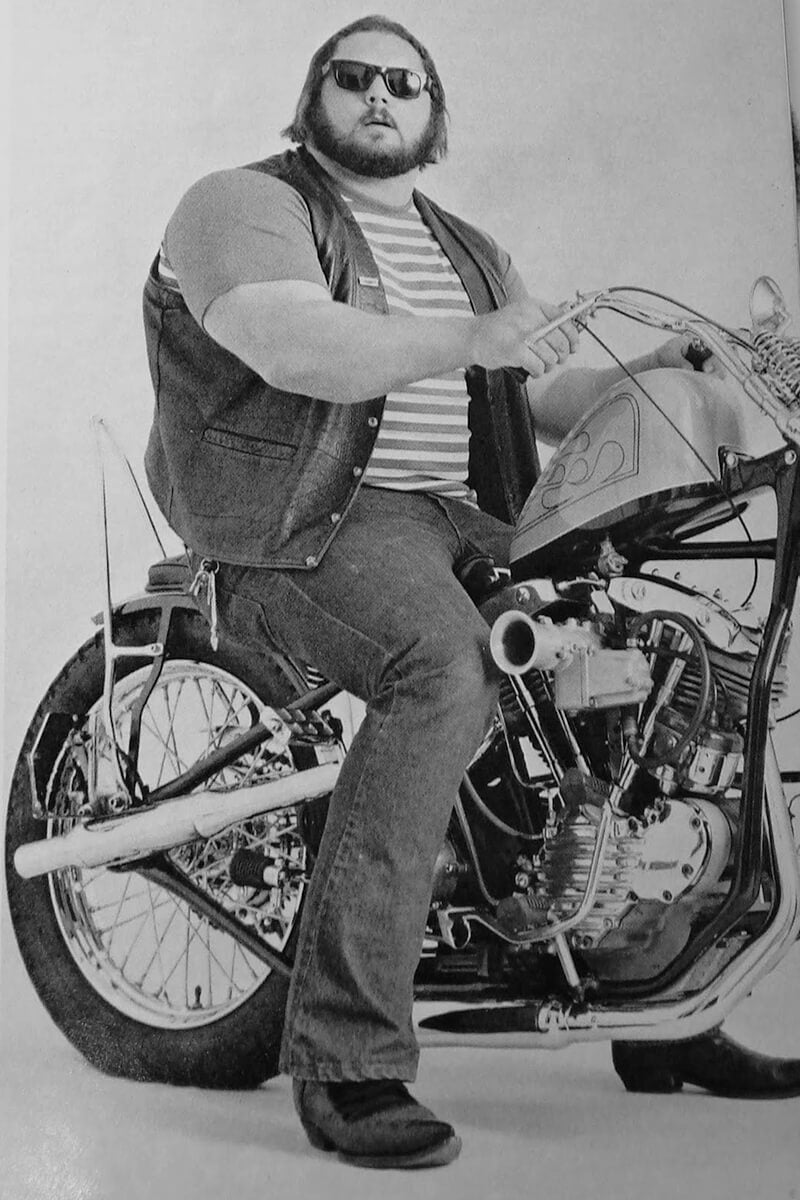
60s Skinny Style Choppers
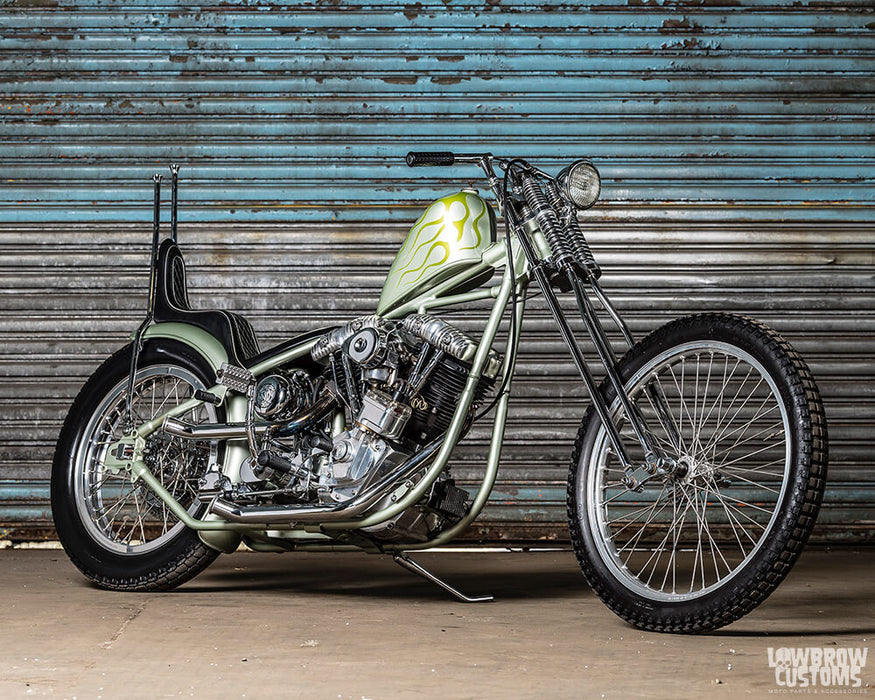 Frisco style chopper - Photo by David Carlo
Frisco style chopper - Photo by David Carlo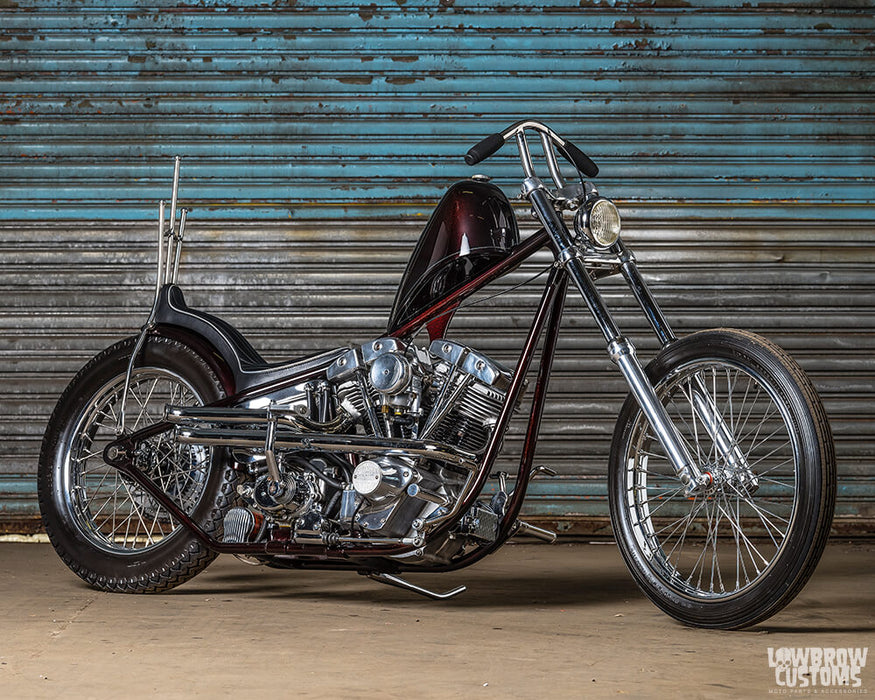 Frisco style chopper - Photo by David Carlo
Frisco style chopper - Photo by David Carlo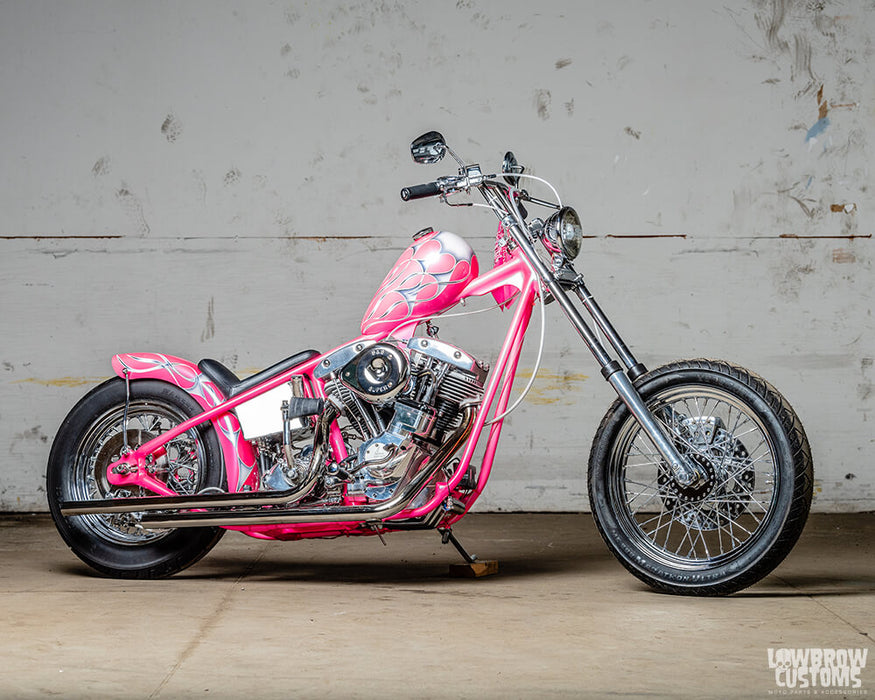 Frisco style chopper - Photo by David Carlo
Frisco style chopper - Photo by David Carlo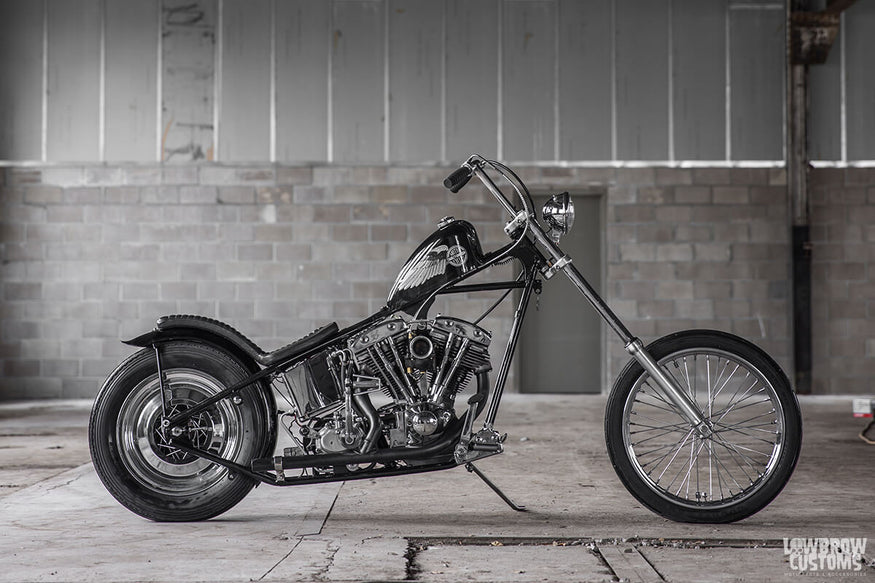 Frisco style chopper - Photo by Mikey Revolt
Frisco style chopper - Photo by Mikey Revolt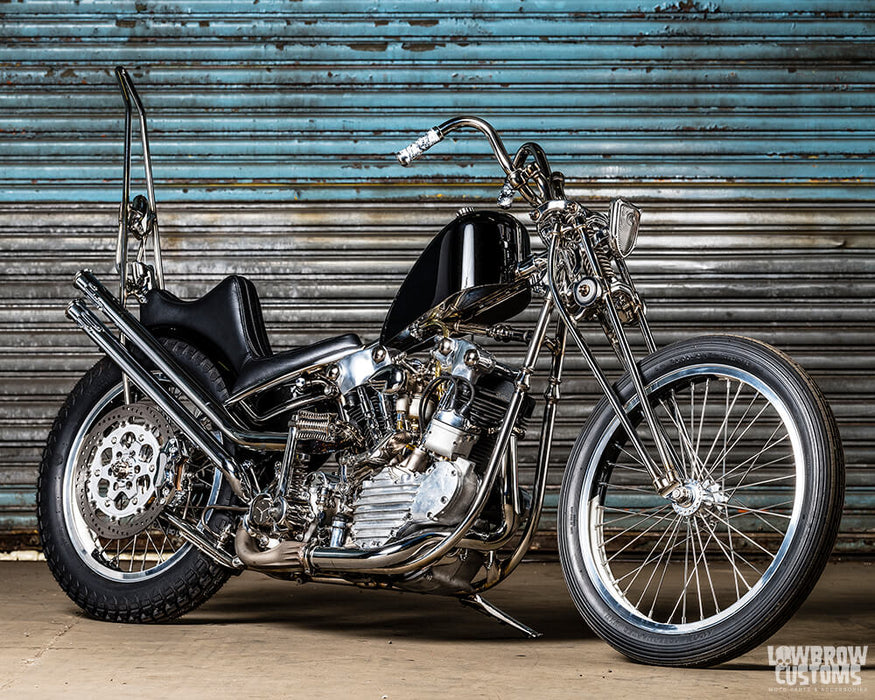 Frisco style chopper - Photo by David Carlo
Frisco style chopper - Photo by David Carlo

Leave a comment at the bottom of this article
Related Products









